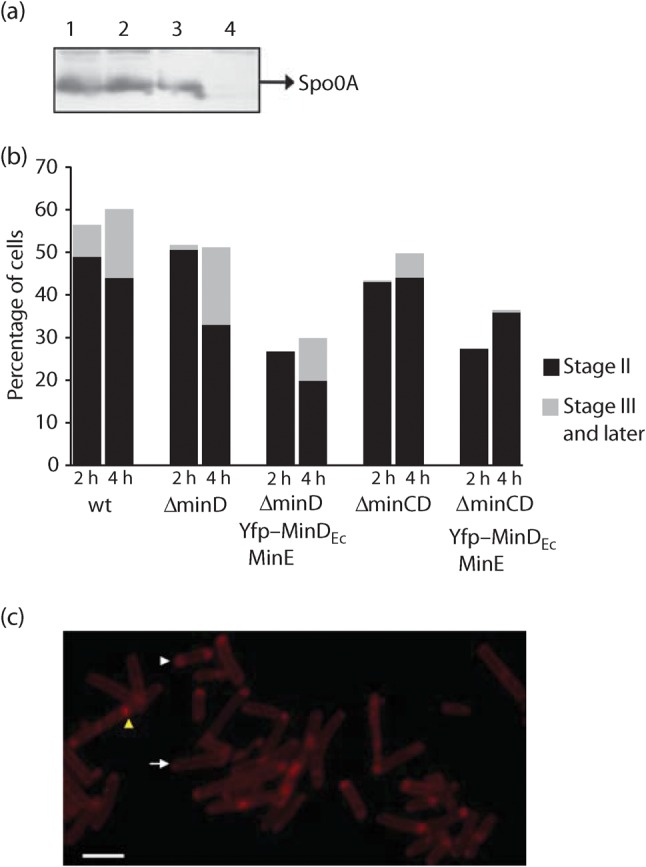Fig. 3.

Sporulation block is caused by inefficient asymmetrical septum formation. (a) Western blot with anti-Spo0A antibody, illustrating that the levels of Spo0A in strains where oscillation was observed (IB1242, lane 1; IB1230, lane 2) are similar to levels observed in wild-type B. subtilis strain PY79 (lane 3). This indicates that the block in sporulation is not at the stage of sporulation initiation. No Spo0A was detected in the control strain Δspo0A IB220 (lane 4). (b) To inspect the cells for asymmetrical septum formation, cells were harvested at hour 2 and hour 4 of sporulation, and the membranes were stained using FM4-64 dye. The cells were classified into three groups. First, cells with asymmetrical septa, representing stage II of sporulation (black); cells with a clear minicell phenotype were excluded. Second, cells in later stages of sporulation, stages III and later (grey). The rest of the cells, representing vegetative cells, are not marked. Cells of B. subtilis IB1230 and IB1370 are visibly blocked or delayed in the formation of polar septa. (c) Example of FM4-64-stained cells of IB1370 at hour 2 of sporulation. The arrow indicates a vegetative cell, the white triangle shows a cell in stage II and the yellow triangle a cell in stage III of sporulation. Bar, 3 µm.
